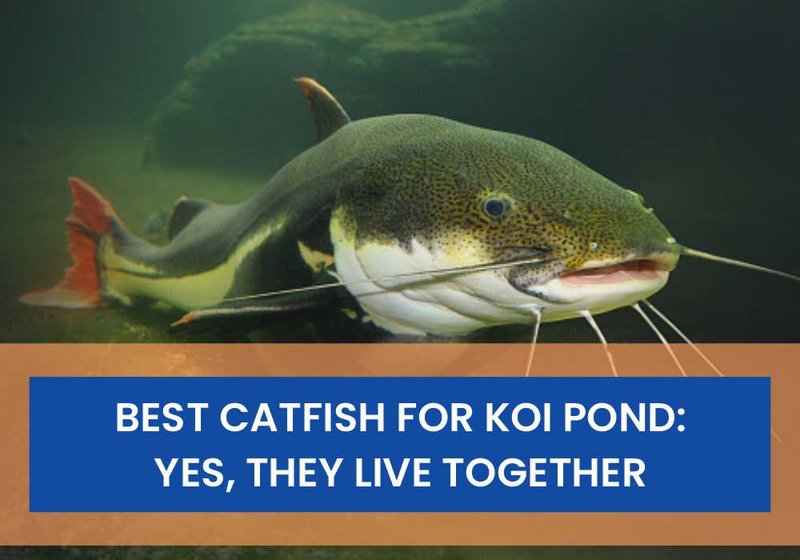
Imagine your pond as a bustling community—like a neighborhood block party. You have different personalities, from the gregarious goldfish to the more reserved koi. Now add a few catfish to the mix, and you might wonder if they’ll get along or just cause chaos. Understanding how catfish interact with other fish can help you create a harmonious aquatic environment.
Before we get into the nitty-gritty, let me say this: the success of your fish community hinges on a few key factors, including species choice, pond size, and the overall environment. Let’s break it down, so you can make the best decisions for your pond.
Understanding Catfish Behavior
Catfish are unique characters in the pond world. They’re known for their whisker-like barbels and a tendency to scavenge for food. Catfish can sometimes be quite territorial, especially when they’re looking for food or breeding spots. This behavior may lead to conflicts if they’re placed with more timid fish, like goldfish or certain types of minnows.
You might be wondering, what makes catfish so special? For starters, they have a strong instinct to dig and forage. This means they can stir up the substrate, causing more skittish fish to become stressed or frightened. Imagine a child playing too rough at that neighborhood block party—some folks would love it, while others might shy away.
One major thing to remember is that catfish thrive in environments with plenty of hiding spots like rocks or submerged logs. This not only provides them safety but also gives the more timid fish a chance to escape if the catfish start acting like the neighborhood roughhousing champ.
Choosing Compatible Fish Species
So, what types of fish can you safely keep with catfish? The answer often depends on the species of catfish you have. There are many different types, and some are more peaceful than others.
If you’re considering smaller catfish, such as Corydoras or Otocinclus, these can work well with peaceful pond fish. They tend to keep to themselves and don’t pose a threat to others. On the other hand, larger species like flathead catfish or channel catfish might be more prone to problem behavior. They can outgrow their space and may turn toward aggressive feeding habits, putting smaller fish at risk.
When assembling your pond community, consider species that can withstand the catfish’s more boisterous nature. Some good companions include:
- Koi
- Goldfish (with caution)
- Shubunkin
- Some species of sunfish
These fish have the size and resilience to coexist peacefully with catfish, ensuring that the neighborhood block party remains fun for everyone involved.
Pond Size and Environment Matters
Your pond size plays a huge role in the success of keeping catfish with other fish. More space often means less stress. Remember that catfish need room to roam, and overcrowding can lead to aggression and territorial disputes.
For a diverse community, aim for a pond size of at least 1,000 gallons if you plan to keep catfish along with other fish. This allows enough room for each species to carve out their territory. If your pond is smaller, you might run into some serious issues, especially with larger catfish.
Also, think about the environmental conditions of your pond. Catfish thrive in warmer water, while some other fish, like goldfish, prefer cooler environments. Ensuring a consistent temperature and good water quality is critical for keeping the peace.
Feeding Catfish and Other Fish
Here’s the thing: feeding can be a point of contention in the pond community. Catfish are opportunistic feeders, meaning they’ll eat just about anything they can find. This includes leftovers from other fish, which can lead to competition during feeding times.
To keep harmony, you can adopt a few strategies:
- Feed separately: Give catfish their food in a different area of the pond to minimize competition.
- Use sinking pellets: Catfish are bottom feeders, so sinking pellets ensure they get their fair share without hogging all the food.
- Schedule feeding times: By feeding at different times, you decrease the chances of aggression or food hoarding.
Remember, a well-fed fish community is a happy one. When everyone gets enough to eat, they’re less likely to squabble.
Monitoring Interactions and Health
After introducing catfish to your pond, keep an eye on their interactions with other fish. Watching how they behave can give you valuable insights into whether they’re getting along or if tensions are rising.
Look out for signs of stress in your other fish. If you notice any hiding, rapid gill movement, or aggression, it may be time to reassess your community. Just like in any community, some fish may just not mesh well together. And that’s perfectly okay!
Regularly check the water quality, too. Poor water conditions can lead to unhealthy fish, making them more susceptible to conflict. Good quality water, including appropriate pH levels and oxygen content, is vital in maintaining a peaceful environment.
When to Separate Catfish From Other Fish
Sometimes, despite your best efforts, you’ll need to consider separating catfish from other pond fish. If you observe ongoing aggression or if certain fish are constantly hiding, this might be a red flag.
If your catfish are growing larger or displaying overly aggressive behaviors, it might be best to create a separate pond or tank for them. Ensuring that every fish has space to thrive is key to keeping the peace.
You might also want to think about seasonal changes. During the warmer months, fish behaviors can alter, which could affect their compatibility. Pay attention to these changes, especially in your local climate.
Final Thoughts on Catfish and Pond Companions
Ultimately, keeping catfish with other pond fish can be successful, but it requires careful planning and monitoring. Understanding the behavior of catfish and the needs of your pond community is vital.
Creating a harmonious environment is like curating that perfect block party. You want diverse personalities, but not everyone will get along. By choosing compatible species, maintaining a suitable environment, monitoring interactions, and providing separate feeding areas, you can create a thriving pond where your catfish and other fish live happily side by side.
Remember, the goal is to enjoy your aquatic community. So take your time, observe their interactions, and adjust as needed. Happy fish-keeping!

